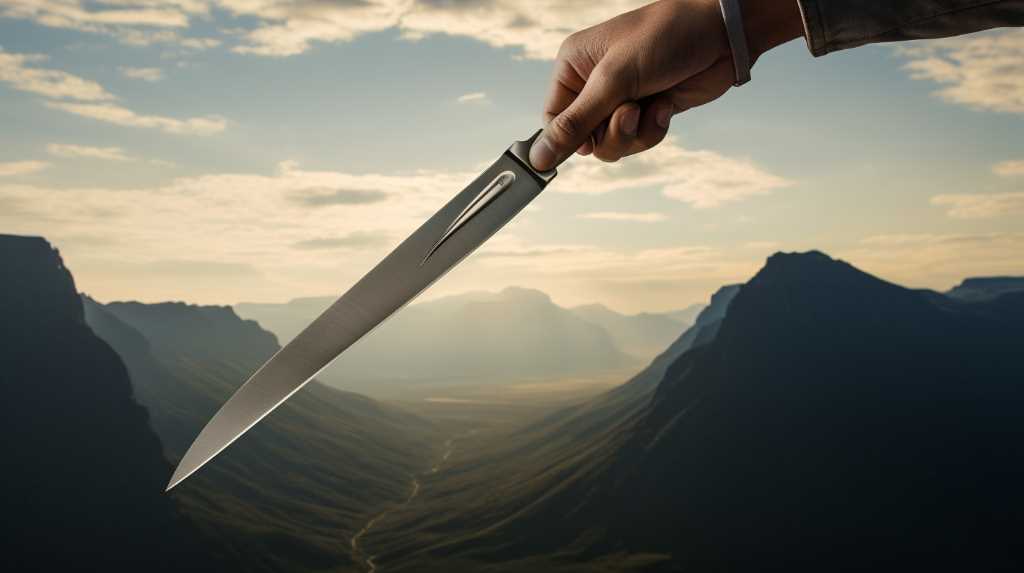
Are you in pursuit of the ultimate throwing knife, capable of soaring through the air with unparalleled precision and distance? Look no further.
In this article, we delve into the world of long-distance throws and provide you with expert guidance on choosing the perfect throwing knife.
From the benefits of balanced knives to the importance of aerodynamic designs and lightweight construction, we leave no stone unturned.
Prepare to unlock the secrets that will elevate your throwing game to new heights.
Key Takeaways
- Balanced throwing knives improve accuracy and precision in long-distance throws.
- Aerodynamic designs allow for efficient airflow, improving stability and accuracy in long-distance throws.
- Lightweight construction improves maneuverability of throwing knives.
- Longer blades offer enhanced stability during the throwing motion.
Benefits of Balanced Throwing Knives
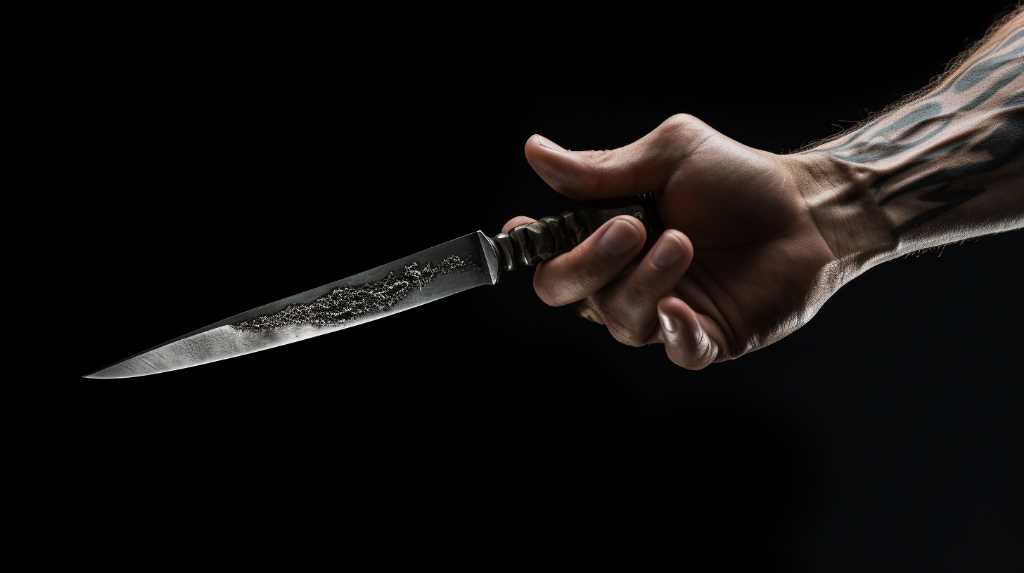
While there are various factors to consider when selecting a throwing knife, such as weight and design, it is essential to highlight the benefits of balanced throwing knives, which can significantly improve accuracy and precision in long-distance throws.
A balanced throwing knife is one that has an equal distribution of weight along its length. This balance allows for better control and stability during the throw, resulting in increased accuracy. When a throwing knife is well-balanced, it rotates smoothly through the air, maintaining its trajectory and reducing the chances of wobbling or veering off course.
This precision is especially crucial in long-distance throws where even the slightest deviation can cause the knife to miss the target completely. Therefore, for those seeking liberation in their throwing skills, investing in a balanced throwing knife is a wise choice.
Features of Aerodynamic Designs
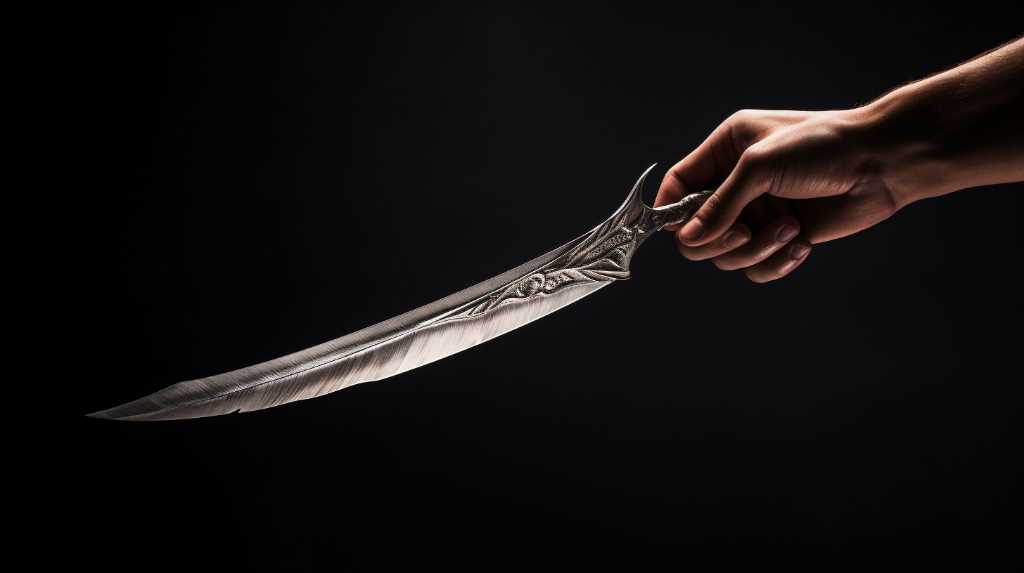
The aerodynamic designs of throwing knives allow for efficient airflow, resulting in improved stability and accuracy during long-distance throws. These designs are crucial for achieving maximum performance and precision in throwing sports.
Aerodynamic features such as a streamlined body, balanced weight distribution, and carefully crafted blade shape contribute to the enhanced performance of throwing knives.
The streamlined body reduces air resistance, allowing the knife to cut through the air smoothly. Balanced weight distribution ensures that the knife maintains stability during flight, minimizing any unwanted wobbling or spinning. The carefully crafted blade shape reduces drag and enhances the knife's ability to maintain a straight trajectory.
These aerodynamic features enable throwers to achieve greater distances and accuracy, making the knives suitable for professional competitions or recreational activities. By understanding the importance of aerodynamic designs, throwers can select the right throwing knives to optimize their performance and achieve liberation in their chosen sport.
Importance of Lightweight Construction
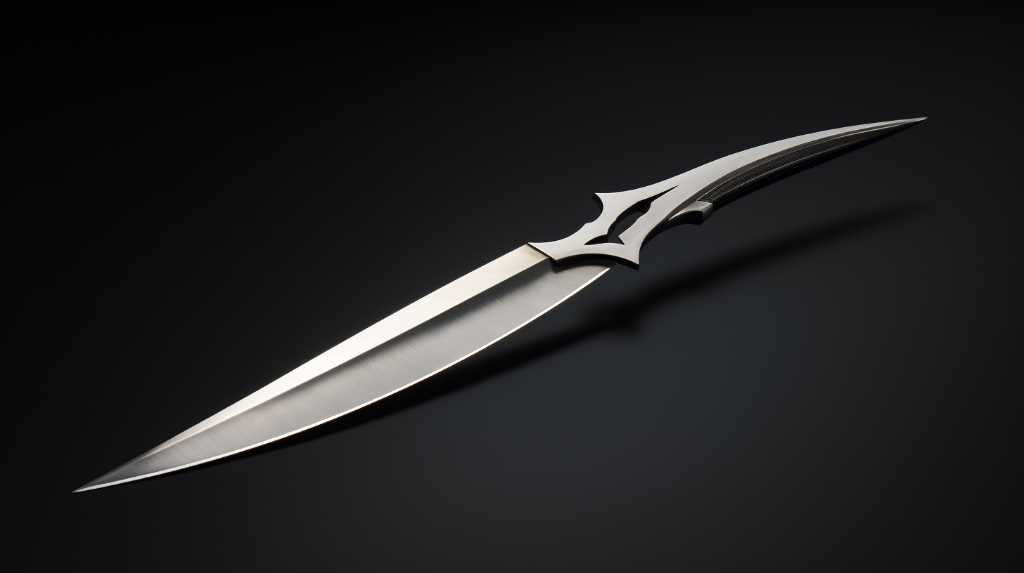
Three key advantages of lightweight construction in throwing knives are improved maneuverability, reduced fatigue during extended use, and increased throwing speed.
Lightweight construction allows for easier handling and maneuverability of throwing knives, making it easier for the thrower to control and adjust the trajectory of the knife mid-flight. This is particularly important when throwing knives over long distances, as it requires precise control and accuracy.
Additionally, the reduced weight of the knife reduces fatigue during extended use, allowing the thrower to maintain their performance for longer periods without experiencing significant discomfort or strain.
Lastly, a lighter knife enables increased throwing speed, as less effort is required to accelerate and release the knife. This results in a faster and more powerful throw, increasing the chances of hitting the target accurately.
Overall, lightweight construction offers significant advantages for throwers who desire improved maneuverability, reduced fatigue, and increased throwing speed.
Advantages of Longer Blades

One advantage of longer blades, in addition to their increased range, is the enhanced stability they provide during the throwing motion. This stability is crucial for achieving accuracy and precision when throwing a knife over long distances. Here are three reasons why longer blades offer enhanced stability and should be considered by those seeking liberation in their throwing game:
- Improved balance: Longer blades distribute the weight more evenly along the length of the knife, promoting a balanced and controlled throwing motion. This helps prevent wobbling or veering off course, resulting in more accurate throws.
- Increased rotational inertia: Longer blades have a greater rotational inertia, meaning they resist changes in their spinning motion. This resistance helps maintain a consistent rotation during the throw, reducing the chances of the knife spinning too fast or too slow and improving accuracy.
- Enhanced grip: Longer blades offer more surface area for grip, allowing for a firmer and more secure hold. This added grip ensures better control over the knife, minimizing the risk of slippage during the throw and increasing stability.
Factors to Consider for Streamlined Handles
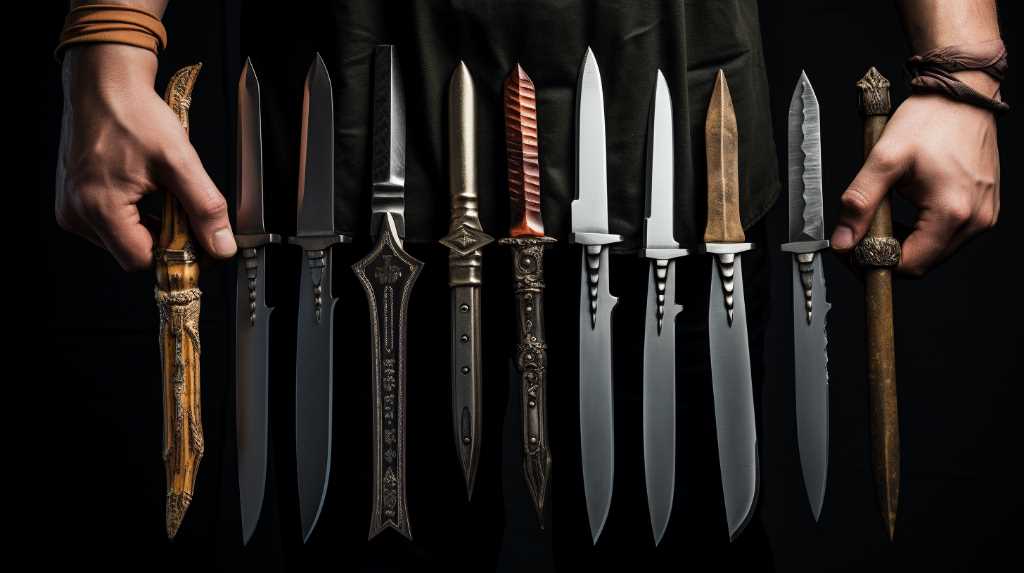
When considering streamlined handles for throwing knives, it is important to evaluate their ergonomic design and how they contribute to a comfortable and secure grip during the throwing motion. Streamlined handles are specifically designed to minimize resistance in the air and improve accuracy and speed.
These handles are typically made from lightweight yet durable materials such as carbon fiber or high-quality polymers. They feature a slim and contoured shape that fits comfortably in the hand, allowing for better control and reducing the risk of slippage during the throw. The design also takes into account the natural movements of the hand, ensuring that the handle aligns with the throwing motion for maximum efficiency.
Additionally, some streamlined handles may incorporate textured surfaces or grooves to enhance grip and prevent the knife from rotating in mid-air.
Overall, the ergonomic design of streamlined handles plays a crucial role in achieving accurate and consistent throws, making them a valuable choice for throwing knife enthusiasts.
Frequently Asked Questions
What Are Some Recommended Throwing Techniques for Maximizing Long-Distance Throws With Balanced Throwing Knives?
To maximize long-distance throws with balanced throwing knives, it is recommended to employ proper throwing techniques. These techniques include a consistent grip, controlled release, precise aim, and sufficient power in the throw.
Are There Any Specific Materials That Are Commonly Used in the Construction of Aerodynamic Throwing Knives?
Aerodynamic throwing knives commonly use materials such as stainless steel or carbon steel for their construction. These materials offer durability and precision, allowing for optimal long-distance throws.
Can Throwing Knives With Longer Blades Be Used for Purposes Other Than Long-Distance Throwing?
Throwing knives with longer blades can be used for various purposes beyond long-distance throws. Their longer length provides increased stability and penetration, making them suitable for tasks such as hunting, survival, and self-defense.
Are There Any Additional Factors to Consider When Selecting a Throwing Knife With a Streamlined Handle, Other Than the Handle's Design?
When considering a throwing knife with a streamlined handle, it is important to look beyond its design. Factors such as material composition, weight distribution, and grip texture can greatly impact the knife's accuracy and performance.
Are There Any Specific Safety Precautions to Take When Practicing Long-Distance Throws With Throwing Knives?
When practicing long-distance throws with throwing knives, it is essential to prioritize safety. This involves wearing protective gear, practicing in a designated area, maintaining proper grip and posture, and ensuring the knives are in good condition.
Conclusion
In conclusion, when it comes to choosing the right throwing knife for long-distance throws, it is crucial to prioritize balance, aerodynamics, lightweight construction, and longer blades. These factors contribute to achieving optimal performance and accuracy.
Additionally, streamlined handles play a significant role in ensuring a smooth and controlled throw. By considering these aspects, throwers can enhance their skills and improve their chances of hitting their target with precision and finesse.
So, remember to select your throwing knife wisely and always aim for the bullseye!

